What does lagenaria look like and how to grow it?
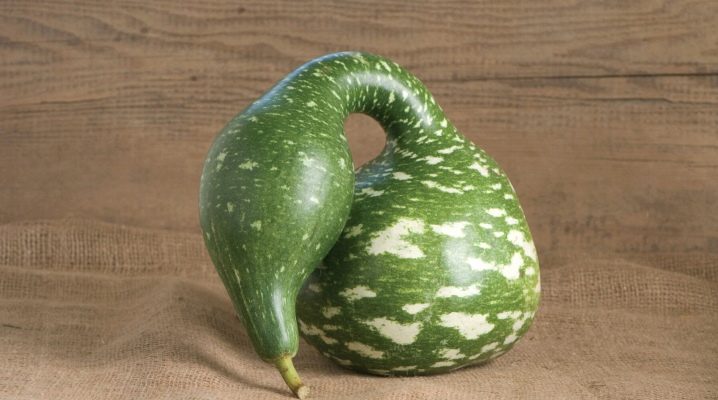
Lagenaria is a vegetable that has gained popularity among gardeners not so long ago. It attracts everyone with its fruits, which differ not only in their pleasant taste, but also in their unusual shape.
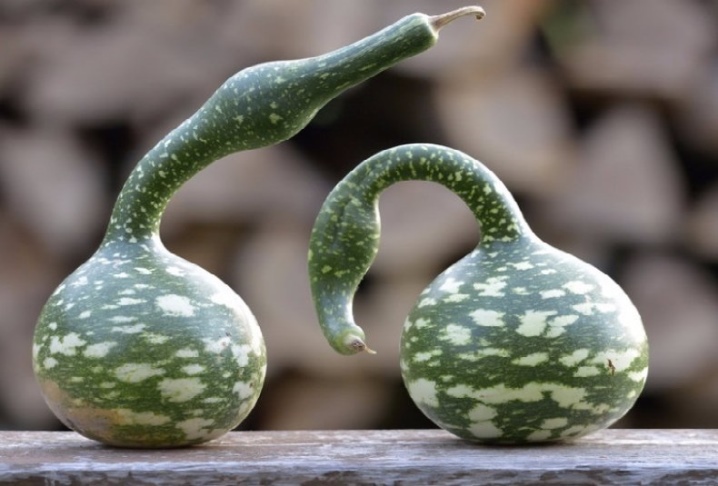
What is this plant?
Lagenaria vulgaris is known to gardeners under such names as Vietnamese zucchini, Indian cucumber, gourd, and bottle or musical pumpkin.... She owes these names to her unusual appearance.
The fruits of this pumpkin can be round, pear-shaped, oval or elongated. Very often, a ripe plant resembles a large cucumber, bottle or original vase in its shape. These pumpkins are very lightweight. Their peel is dense, it does not allow water to pass through. In length, the fruits can grow up to two meters. One plant can form from 5 to 15 large pumpkins.
The fruits ripen quite quickly.
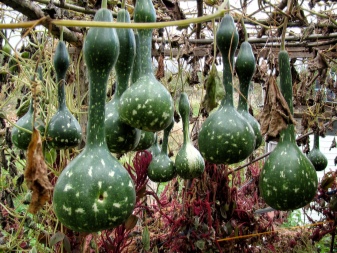
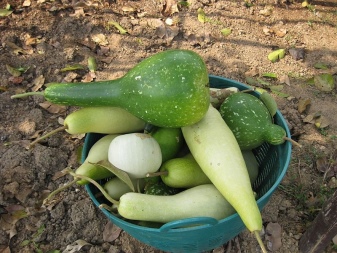
Special attention should be paid to the description of the plant itself. Lagenaria is an annual herbaceous vine... It has a long, creeping stem that can be easily fixed on any surface. In summer, large white flowers appear on it. They unfold closer to the night. Such buds smell very nice. Due to the fact that these flowers remain closed during the day, gardeners have difficulties with pollination of plants. Often pumpkins have to be manually pollinated.
In nature, the vegetable grows in hot countries. It is actively grown in Africa. There, these plants are used to create dishes, containers for storing various things, as well as musical instruments.
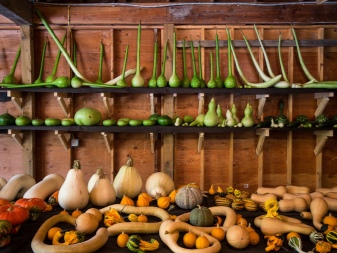
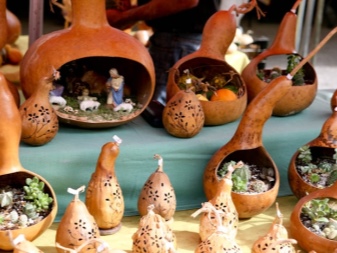
Popular species and varieties
There are several varieties of lagenaria. Each of them differs not only in the shape of the fruit, but also in the peculiarities of caring for plants.
- "Goose in apples". It is one of the most famous African pumpkin varieties. The fruits of this plant look very unusual. They really resemble geese in their shape. Therefore, these plants are most often planted in a conspicuous place. In this case, decorative pumpkins serve as a real decoration of the site. The fruits of this plant can be used as food. About ten large pumpkins are harvested from one bush. It should be noted that these plants are completely unpretentious to care for. The fruits of this type of lagenaria can be stored for several months without spoiling or becoming less tasty.
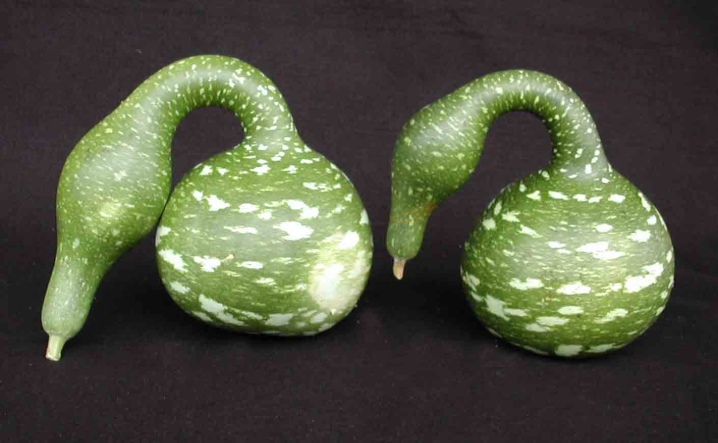
- "Swan". The fruits of these plants are also bird-like. They are green in color. The plant is covered with white spots along the entire perimeter. This is its main distinguishing feature. The top of the pumpkin is usually slightly curved. The fruits of the plant are rarely eaten, because they have a rather bitter taste.
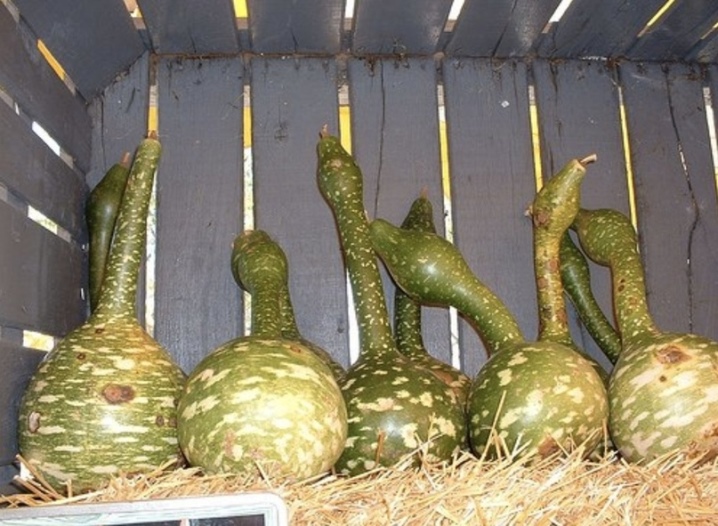
- "Cobra". The variety is also considered decorative. Ripe fruits look like cobras. Plants are thermophilic. Therefore, they need to be grown in well-lit areas. Seedlings should be planted only after the onset of heat. Pumpkins of this variety are often used to create various crafts. They make beautiful decorative figurines and vases.
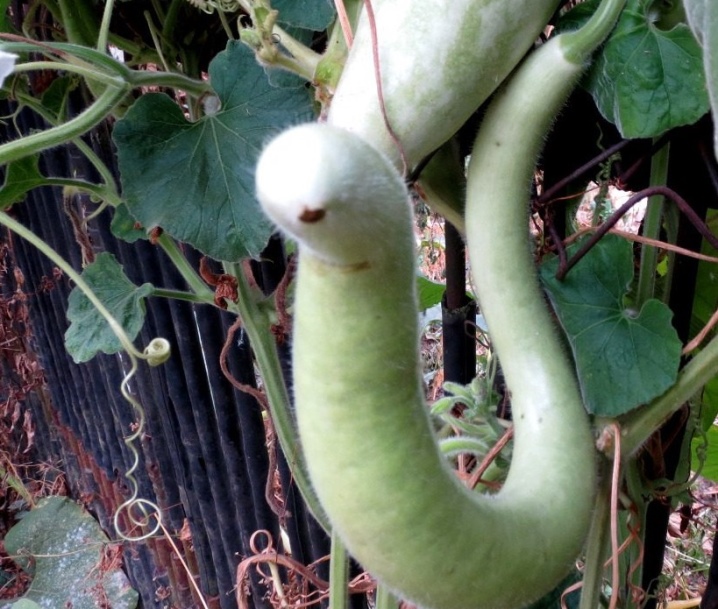
- "Bottle". The pumpkin got its name not because it looks like a bottle. The fact is that bottles for the transfer of liquid were previously created from the fruits of these plants. Dishes from this pumpkin are rarely prepared, because its taste is very unusual. Not everyone likes him. At the same time, the fruits contain a large amount of vitamin C. Therefore, they are considered very useful. This pumpkin variety has one interesting feature.If you cut off a piece from the fruit without ripping it off the bush, the plant will not stop growing. It will develop further.

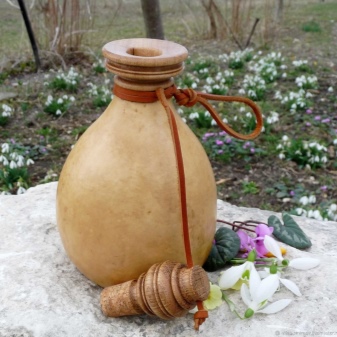
- "Snake". This edible pumpkin looks like a long cucumber or squash at first. The fruits develop very quickly. Over time, each pumpkin becomes more and more like a snake hiding among the leaves. The serpentine lagenaria can grow up to 70 centimeters in length. But if a person plans to eat the fruits, they need to be plucked even before they are fully ripe.
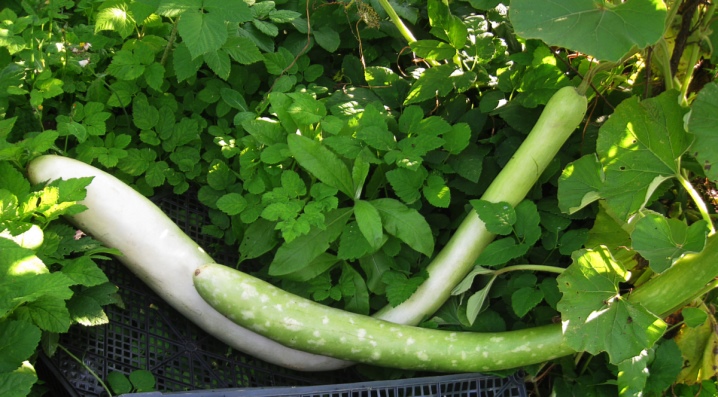
- "Turban"... This pumpkin variety has strong roots. Therefore, it grows well in almost any soil. This variety of lagenaria differs from other plants in the unusual appearance of the fruits. Each pumpkin looks like two plants growing together. Moreover, both parts differ from each other in color. Seedlings of these pumpkins are planted in the soil in June. The fruits are harvested in a month and a half. Plants are highly regarded for both their taste and visual appeal.
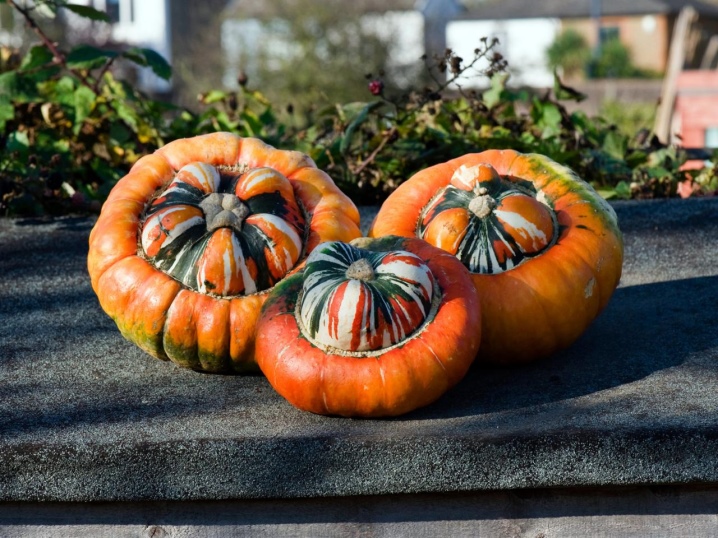
- "Kolbasa"... Perfect for landscaping the backyard area. The length of an adult bush reaches 10-15 meters. The plant weaves very well. Therefore, it can be planted next to some buildings or arches. The stems of the pumpkin very quickly twine around such a support. The fruits of this plant are most often used to create dishes and various decorative items.

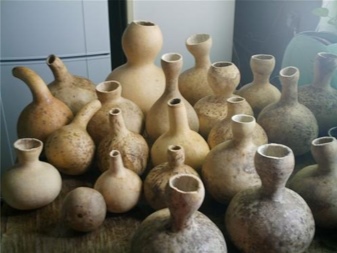
- "Cylinder". This long-fruited variety of pumpkin requires special care. It is worth planting seedlings only after the onset of heat. After planting, the plants must be watered regularly. If properly cared for, the length of ripe fruits can reach one and a half to two meters.
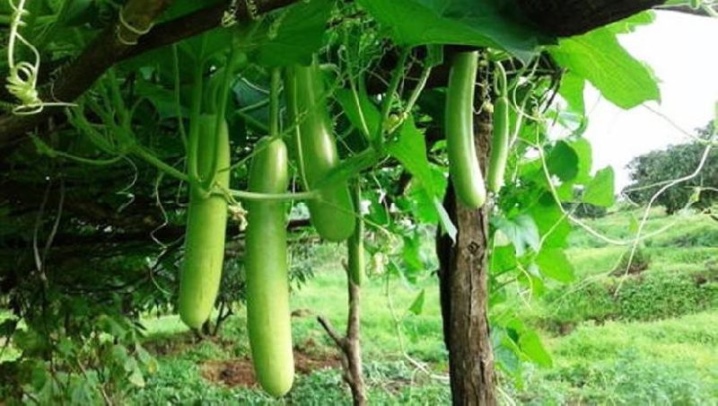
- "Mace". In its shape, each pumpkin fruit resembles a massive mace. Its size depends on the conditions in which the plant was grown. As a rule, clavate lagenaria bushes are planted on the site for landscaping. The fruits are most often used in creativity. They are rarely eaten. Their taste is specific and not liked by everyone.

- "Log". The large-fruited, log-shaped pumpkin resembles a giant squash in its appearance. In length, it grows to one and a half to two meters. Most often, plants are planted on the site to make it look more beautiful. But the fruit of the pumpkin can be used as food. Their pulp is tasty and aromatic.

- "Cylindrical". This plant has long and strong shoots. Usually they are tied to some kind of vertical support. The fruits of such a pumpkin are most often used in cooking as ordinary zucchini. They are fried, marinated, or used to make delicious caviar
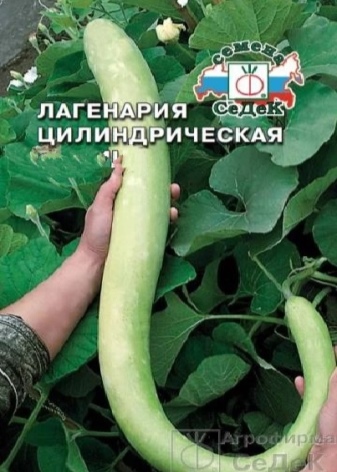
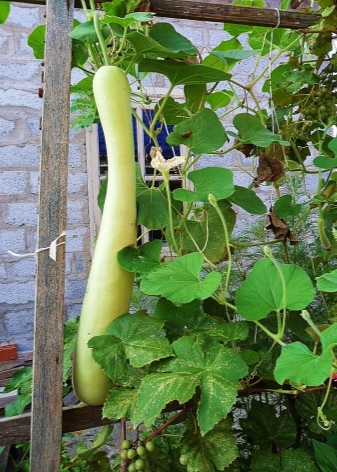
Seeds of all varieties of Lagenaria are readily available commercially. Therefore, each gardener can plant such a plant on his site.
Growing
Despite the fact that in nature lagenaria grows in hot countries, this variety of pumpkins can be grown in the Moscow region, and in the Urals or in Siberia. The main thing is to follow all the rules when planting plants and take good care of them.
Sowing seeds
First you need to grow strong and healthy seedlings. The time of planting seeds depends on the weather conditions, as well as on the characteristics of the local climate. In warm regions, this is done in the first days of March. In cold weather - in the second half of April. If the seed is planted too early, the seedlings will quickly stretch out and become too weak.
Before starting planting, the grains need to germinate. It is very easy to do this at home. The seeds should be wrapped in a piece of damp cloth or placed in a container with sawdust and then sprayed with warm water. The seeds prepared in this way should be left for a couple of days in a warm place. It is worth remembering that without germination, pumpkin sprouts sprout very badly, because its seeds have a very dense peel.

Correctly prepared planting material can be planted in a nutritious substrate. For its preparation, the soil is mixed with peat, well-rotted humus and sand.Some gardeners also add a small amount of clean wood ash to the container.
After planting the seeds, the containers must be covered with cling film. In such conditions, the pumpkin sprouts much faster. After the seedlings appear in the container, the film can be removed. Otherwise, young plants will overheat.
The grown seedlings need to be well cared for. The seedlings should be in the light. Usually it is placed on a balcony or on a windowsill.
From time to time, green sprouts need to be watered. This should be done as soon as the soil in the container begins to dry out.
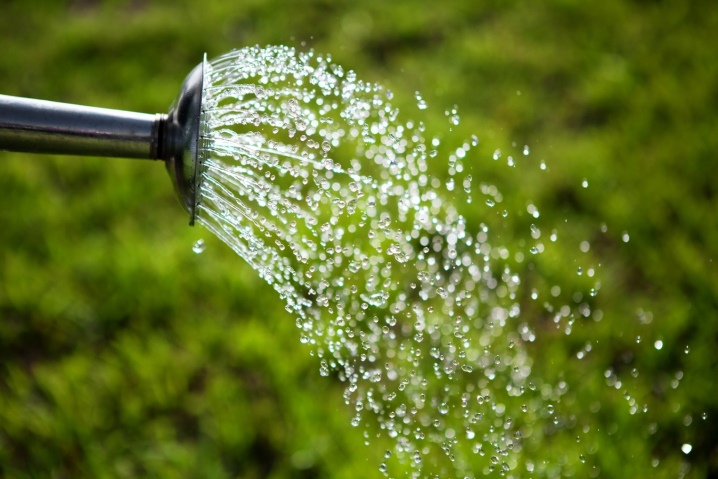
Landing in open ground
Before planting a thermophilic lagenaria in open ground, it must be hardened. In this case, the plants adapt faster to new conditions. It is very important to choose a suitable place for planting the pumpkin. In this case, you need to focus on the following points.
- Illumination of the site. First of all, it is worth remembering that the area where young pumpkins grow must be well lit. As a rule, lagenaria is planted on the south side.
- The presence of supports nearby. So that the stems of this plant can rise, it is planted next to some kind of support. This can be a wall of a building or a fence. Some gardeners plant pumpkins next to trees or install special supports for them.
- Soil acidity. Since this plant does not like too acidic soil, the site should be deacidified before planting seedlings. You can use regular wood ash for this.
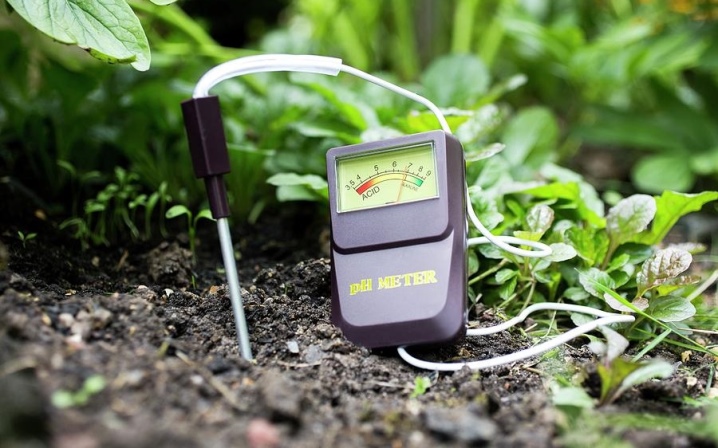
Before planting lagenaria in the soil, the soil must be fertilized... Organic fertilizers are usually used for this purpose. They are introduced into the soil in the process of digging up the site in the fall.
After loosening the soil, you need to dig several deep holes. Young seedlings must be carefully placed in them. After that, the plants are covered with a small amount of nutritious soil and watered abundantly.
Healthy seedlings adapt to new conditions rather quickly. After the appearance of several full-fledged leaves on the sprouts, the pumpkin must be spud. At the same time, trellises are installed on the beds, around which the stems of the plant will trail.
If the pumpkins are growing next to a tall fence or wall, you can skip this step.
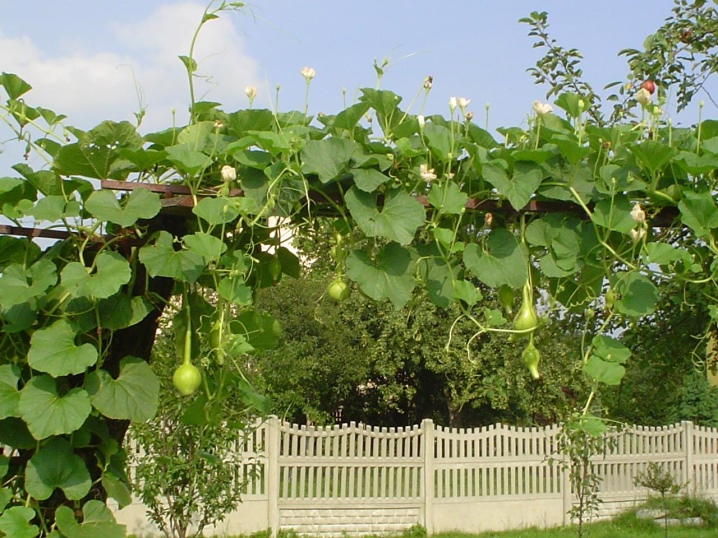
Care
In order for the plants to develop normally and bear fruit well, they need to be properly looked after.
- To water... Lagenaria is not afraid of drought. But for normal fruiting, it is better to water the plant regularly. If the summer is hot, you will have to do this 2 times a week. Watering is stopped only after the fruits are fully ripe. There is no need to water pumpkin bushes in rainy summer. Excess moisture will only harm them.
- Feed... To increase the yield of the plant, it can be fed after planting on the site. Fertilizers must be applied in liquid form. It is best to do this in the evening. For feeding lagenaria, you can use both mineral fertilizers and organic ones. The break between procedures must be at least ten days.
- Pollinate... For plants to bear fruit well, gardeners need to pollinate them by hand. To pollinate one female flower, pollen from several male flowers is used.
- Form a bush. After 7-8 full-fledged leaves appear on the stem, you need to pinch the pumpkin. After this procedure, the growth of lateral shoots is activated, on which female flowers grow. If the plant is next to some kind of support, it is not necessary to pinch it and spend time forming a bush.
Observing all these rules, large pumpkins can be grown on any site.
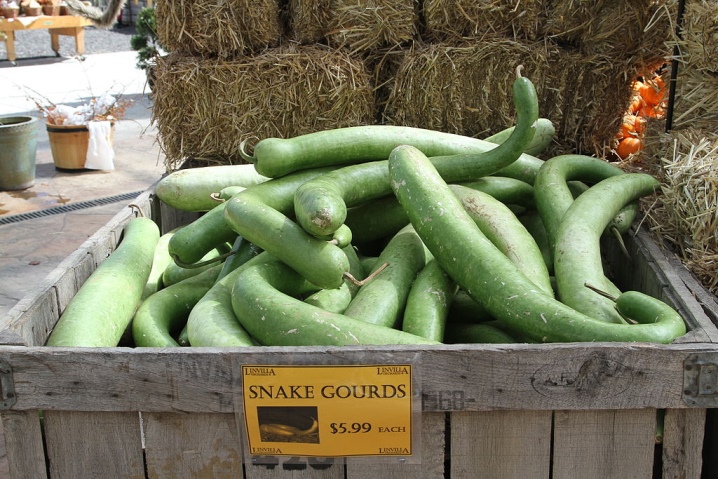
Application
Three months after planting seedlings in open ground, the fruits of lagenaria can be plucked and transferred to a warm place. It is very important to have time to do this before the onset of cold weather, otherwise the pumpkins will simply die. You can store the fruits in any warm room. There they can lie for several months without spoiling. The harvested fruits can be used in different ways.
In medicine
Lagenaria is rich in vitamins and has great health benefits. The human body benefits not only from pumpkin pulp, but also from its foliage with petioles.... A medicinal broth is usually prepared from the tails of the Lagenarii. It is used to boost immunity. To prepare such a broth, several petioles are placed in a container with water and boiled for 20 minutes. The broth prepared in this way is consumed before each meal.
To fight inflammation on the skin, bottle gourd juice is used. Light lotions are made from it. The use of this product allows you to improve the condition of the skin in a short time.
The seeds, ground with honey, help to strengthen the immune system, as well as remove helminths from the body. To achieve the desired result, you need to use such a product for several days in a row. Pumpkin seeds can also be added to a variety of salads.
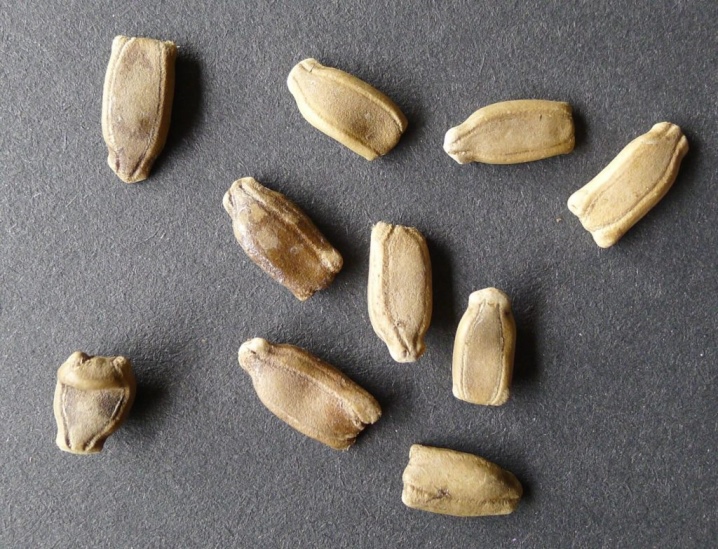
In cooking
Most varieties of this pumpkin are edible. Cooking from Lagenaria is as easy as cooking from regular zucchini. Most often, the fruits of this plant are used to prepare caviar, pancakes and other snacks. Stuffed pumpkin is also very tasty. It can be filled with both meat and rice or vegetables. A little less often, various jams are prepared from large fruits. But they also turn out to be very tasty.
In cooking, it is recommended to use young pumpkin. Older fruits have less tender flesh.
Almost everyone can eat pumpkin. Such a dietary product fits perfectly into the diet.
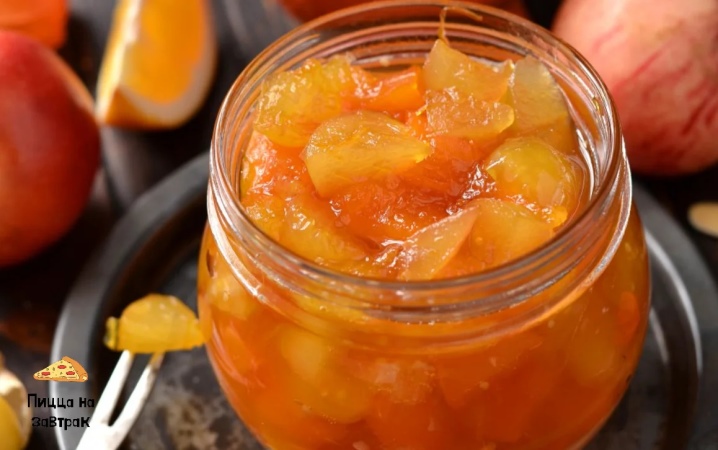
In creativity
From fully ripe fruits, you can make various crafts. Most often, they are used to make voluminous bottles or beautiful vases. Dishes made from these fruits are durable. In addition, it does not leak water.
For needlework, fully ripe fruits are used. They are cut from the stem and then hung in a well-ventilated area. After 10-14 days, the fruits are disinfected, and then washed and dried well. After that, the pumpkin is sent to a warm and dark place for several more months. You can tell that the pumpkin is ready for use by the sound it makes when shaken. At this moment, the seeds are loudly rattling in it.
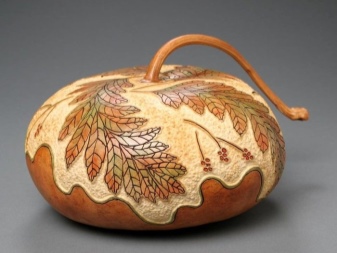
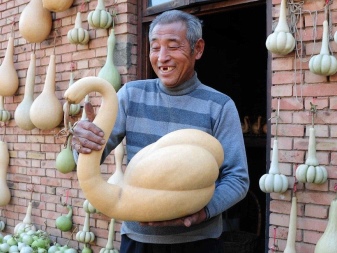
At this stage, the pumpkin must be cleared of seeds and pulp. Some handicraft lovers additionally process each fruit outside. To begin with, using a wire washcloth, scrape off the top layer of the peel from it. After that, it is additionally decorated.
If the vessel will be used for storing drinks or food, it is better to leave the walls intact or decorate with carvings. The decoration scheme for such a product can be anything you like. If pumpkin dishes are used to decorate a room, they can be varnished or painted. Vessels decorated using decoupage technique also look beautiful. A pumpkin decorated in this way will be an excellent gift for a loved one.
In general, lagenaria is a plant that is really worth planting on your site. The green bush will serve as an excellent decoration for the site, and its fruits are suitable both for creating various crafts and for preparing delicious dishes.
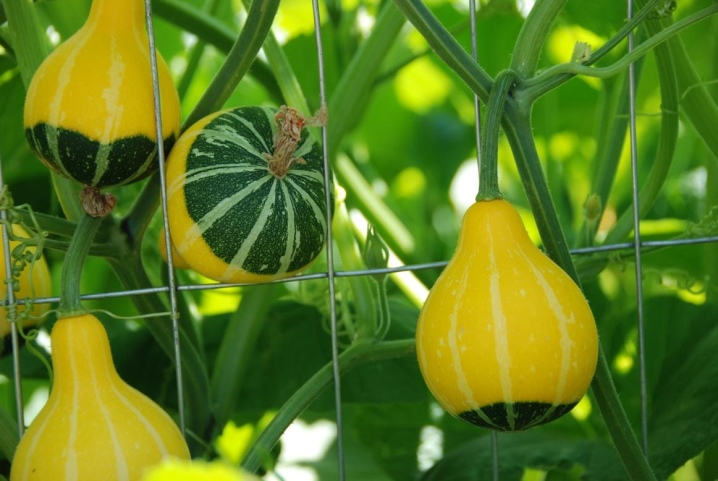













The comment was sent successfully.